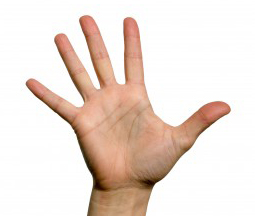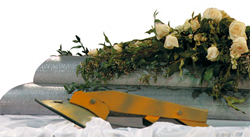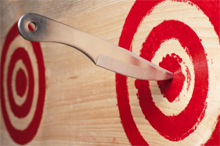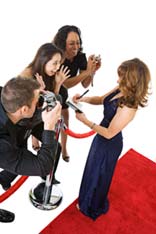5 Ways To Renovate Rather Than Replace Your Trade Show Exhibit
Before you buy a new trade show exhibit, take stock of what you already own and determine if renovation is a better course.
 Rearrange exhibit elements you own to create something new. It is easiest to do this if you own a modular exhibit. But it is possible to switch around parts and pieces of most custom exhibits as well. And don’t forget about unused components that are left over from other old exhibits. Sometimes a combination of parts from two or three booths that have been in storage can be used to create an entirely new booth.
Rearrange exhibit elements you own to create something new. It is easiest to do this if you own a modular exhibit. But it is possible to switch around parts and pieces of most custom exhibits as well. And don’t forget about unused components that are left over from other old exhibits. Sometimes a combination of parts from two or three booths that have been in storage can be used to create an entirely new booth.- Refinish or cover worn booth elements. There are countless exhibit refurbishment options. You can have worn aluminum or metal parts re-anodized or powder coated to make them look brand new or transform them into a new color. Exhibit panels can be re-laminated or re-covered to conceal worn surfaces with other materials. You can even have old display panels covered with magnetic graphics.
- Update hardware and lighting. One of the least expensive ways to update your exhibit is to simply update cabinet hardware and replace outdated light fixtures.
- Update the flooring system. You can purchase a whole new flooring system or remodel your existing flooring to create the impression of newness. A new floor can be anything from new, colorful carpet to adding a raised floor.
- Add a few new elements. The most effective way to refresh an outdated exhibit space is to add a few new components —hanging signs and banner, displays, a conference area, desks, You can even incorporate more elaborate tension-fabric structures to revive your exhibit and give it an up-to-date look.
A few smart, simple changes or additions can quickly and affordably give a tired, outdated exhibit a brand new look.
Staff Your Trade Show Exhibit to Make the Sale!
You’ve done everything brilliantly. Your new trade show exhibit has arrived and is set up. Your product displays are stunning. Your agency put together collateral that will impress your prospects. Everything is set for the show opening — or is it?
 The majority of buyers only attend one or two trade shows a year, and they come to the show planning to make buying decisions. Plan ahead so you have the right team to close the sale.
The majority of buyers only attend one or two trade shows a year, and they come to the show planning to make buying decisions. Plan ahead so you have the right team to close the sale.
Are you properly staffed?
Most people are aware that having a well-trained trade show exhibit staff is one of the keys to trade show success. But it is just as important to be properly staffed.
Make sure you have the right staffing mix at the show. What functions need to be represented? Do you need technical staff or product specialists to support your sales team? Augment your trade show exhibit team with home office staff who are on call and available to answer questions and provide information to key prospects.
Do you have enough staff to cover the booth?
Even in a small trade show exhibit, it is ideal to have at least two people at your booth all the times so that one person is free to leave the booth and interact with attendees as they are walking by. If you are trapped in your booth waiting for them to come to your trade show exhibit, you will miss key prospects.
Make sure your team maximizes downtime
There is a lot of downtime at a trade show. Some experts estimate that as much as 90% of the time exhibitors spend at a trade show is wasted. Organize lead follow-up activities so that they can be done from the exhibit floor during these idle periods. Send out follow-up emails to prospects. Gather information to answer questions from prospects and get these answers to prospects before the show ends. Meet with the press to generate some proactive PR for your company. Have your team communicate trade show news to key prospects who could not attend the show from the trade show floor.
The right team is the essential element
Put the right team in a great trade show exhibit. Give them the training and tools they need to succeed and you will increase your trade show sales.
Trade Show Exhibit Design: Motion Captures Attention
Few exhibitors use motion to draw visitors to their trade show exhibit, and this presents an opportunity for the exhibitors who do make effective use of motion. Impactful motion can be created in 2-D with digital video or interactive displays, or in 3-D with people or other moving objects.
Effective 2-D Motion Techniques
 Trade show floors are loaded with digital display monitors but they are rarely used to create motion. Most often they are used to show videos of products, digital slide shows or other programming that is meant to be watched from a few feet away. This can be an important element of a booth but may not draw someone into your booth.
Trade show floors are loaded with digital display monitors but they are rarely used to create motion. Most often they are used to show videos of products, digital slide shows or other programming that is meant to be watched from a few feet away. This can be an important element of a booth but may not draw someone into your booth.
To attract passersby place displays above head level and in a location that can be seen easily from at least 10 or 20 feet away. Using large display screens or an array of displays can help make a big statement.
If you want to attract people with something moving, the programming is what really matters. Program your display with attention-getting video or graphics. Use large graphic images, bright colors, stark contrast and incorporate motion.
Effective 3-D Motion Techniques
A few exhibitors have created trade show exhibits that incorporate the latest 3-D technology, but most 3-D motion elements used in trade show exhibits are people or objects that are in motion.
People are the most common 3-D motion elements. A product demonstration filled with activity and animated behavior attracts attention. A performer doing any kinetic activity – dancing, juggling, walking on stilts, and so on – can attract large crowds.
The other common 3-D motion elements are physical objects that move. A motion element can include banners, streamers or tension fabric structures that are well above eye level and in motion.
Effective Use of Motion
Motion elements are highly memorable and can leave a lasting impression with trade show attendees. The most effective way to incorporate motion techniques into a trade show booth is to make sure that the moving element reinforces the brand identity and the booth concept. As with every powerful communications tool, integration is essential to success and using motion elements as a gimmick just to attract attention without properly integrating the message can actually undermine your overall efforts.
Used wisely, motion can attract visitors to your trade show exhibit and has the capacity to build awareness and leave a lasting impression of your company and brand.
Putting the Show back into Trade Show Exhibits!
ExhibitorOnline published a case history about a trade show exhibit that brilliantly executed a complete 360 degree trade show exhibit. The exhibit was presented by PayLock LLC, a manufacturer of a self-release car-booting system called the SmartBoot at the International Parking Institute Conference & Expo (IPI) in Las Vegas.
 Since the company’s 2004 launch, PayLock’s president, Cory Marchasin, hoped to snuff out traditional car boots. “My partners and I acquired a car-boot company in 2004, but rather than continue with this traditional technology, we looked for ways to develop a competitive edge and differentiate ourselves from the competition,” Marchasin says. “As part of our creative process to build a better boot, we decided it wasn’t actually the product that needed refining so much as it was the business process itself. Traditional boots and the process associated with them just didn’t seem to make sense anymore.”
Since the company’s 2004 launch, PayLock’s president, Cory Marchasin, hoped to snuff out traditional car boots. “My partners and I acquired a car-boot company in 2004, but rather than continue with this traditional technology, we looked for ways to develop a competitive edge and differentiate ourselves from the competition,” Marchasin says. “As part of our creative process to build a better boot, we decided it wasn’t actually the product that needed refining so much as it was the business process itself. Traditional boots and the process associated with them just didn’t seem to make sense anymore.”
PayLock decided to bury competing products with a funeral-based booth theme. Their exhibit including everything from in-booth caskets to after-hours wakes, PayLock’s “morose strategy used dead-pan humor to rub out the competition — and slay its own expectations in the process.” Here are a few highlights:
- The entire trade show exhibit and program was infused with product messages and tongue-in-cheek tactics to keep the laughs coming.
- Pre-show promotion: An obituary for the traditional boot ran in the show directory, available starting the day before the show opened.
- Two memory boards with images of the traditional boot and the paper permit paid homage to the Smart-Boot’s “deceased” competitors.
- Following the show’s ribbon-cutting ceremony, PayLock pallbearers hoisted the coffins onto their shoulders and led a processional to PayLock’s booth. A five-piece jazz band accompanied the processional, recreating a New Orleans-style funeral march.
- The two coffins were positioned near the back of the exhibit. Monitors above the coffins displayed the time of the next funeral presentation along with whimsical images during the eulogies.
- Tissue boxes, black carpet, and casket sprays adorned the surreal 16-seat in-booth funeral parlor.
- PayLock staffers read the eulogy, which explained the traditional boot’s fate through excerpts from the traditional boot’s journal. Attendees that read pre-scripted eulogies of their own were entered into a drawing for an iPad.
- After the funeral, the bereaved filed past the caskets to pay their respects and collect free T-shirts.
The exhibit was not a hit with competitors, but was very popular with show attendees, and, most importantly, generated a lot of qualified sales leads. The most impressive aspect of this exhibit was how it seamlessly integrated the company’s sales message into an unlikely and memorable branded event.
You can read the entire case history at ExhibitorOnline.com, click here!
Study concludes Face-to-Face Trade Shows Capture Attention Best
As companies look to find ways to make every marketing dollar work harder, some trade show exhibitors have tried to reduce expenses by participating in virtual trade shows. Initial results have shown that virtual trade shows generate few leads and a higher percentage of unqualified leads. Now a report from Cornell University has started to shed some light on the behavioral effect of live vs. virtual meetings.
 The Center for Hospitality Research at Cornell University recently released a report, The Future of Meetings: The Case or Face to Face, that concluded, “The intangibles of face-to-face meetings can be more potent than virtual and online technology when it comes to capturing the imaginations and enthusiasm of attendees.”
The Center for Hospitality Research at Cornell University recently released a report, The Future of Meetings: The Case or Face to Face, that concluded, “The intangibles of face-to-face meetings can be more potent than virtual and online technology when it comes to capturing the imaginations and enthusiasm of attendees.”
The study authors found that “real” events hold the attention of attendees and allow the formation of valuable personal relationships making trade shows, conventions and corporate events well worth the investment.
The report stated, “Large face-to-face meetings and events are the best option when a business or organization needs to capture attention necessary for a new or different strategy, relationship or product.”
The report concluded that face-to-face events are the best option for:
- Capturing attention: Attendees have fewer distractions on the exhibit floor and are less tempted to check e-mails or do other multi-tasking chores than they would when taking part in a virtual event.
- Inspiring a positive emotional climate: Attendees like to associate with their peers. Even people working on virtual technology attend physical conferences.
- Networking and relationship building: Socializing and making new friends in an industry can have great appeal. Experts predict informal networks of people within an organization that are bonded by a group loyalty will become even more important than traditional chains of command as the economy recovers.
The entire report can be found at Cornell’s Center for Hospitality Research website.
Know your Trade Show Terms
It’s hard to walk the walk, when you can’t talk the “talk” of the trade show world. We’re making it easier on you by creating a free downloadable glossary of terms, containing all the terms you need to know to look like a pro at your next trade show.
 Here are just a few of trade show terms you’ll need to know to feel and sound like a real trade show insider:
Here are just a few of trade show terms you’ll need to know to feel and sound like a real trade show insider:
Advanced Order- An order for show services sent to the contractor before actual move in.
Baffle- The partition to control light, air, sound or traffic flow.
Bill of Lading- Document or form listing goods to be shipped.
Blanket Wrap- Non-crated freight shipped via van line covered in protective blankets or padding.
Bone Yard- Equipment storage area at an exhibition hall.
Chevron- Type of cloth used for backdrops.
Consignee- The person to whom goods are shipped.
Corkage- The charge placed on beer, liquor, and win brought into the facility but purchased elsewhere. The charge sometimes includes glassware, ice, and mixers.
C.W.T.- Hundredweight- A measurement of the weight of exhibit freight. Usually 100 lbs.
Drayage- The unloading of your shipment at an exhibit hall, transporting it to your booth, storing and returning your empty crates and cartons, and reloading your shipment at the close of the show.
Duplex Outlet- Double electrical outlet.
Floater- Worker(s) used by a foreman to help assigned labor for short periods of time.
Foam Core- Lightweight material with a Styrofoam center used for signs, decorating, and exhibit construction.
Four-Hour Call- Minimum work period for which union labor must be paid.
I & D- Install and dismantle.
Infringement- Use of floor space outside exclusive booth area.
Marshalling Yard- Check-in area for trucks delivering exhibit material.
Pegboard panel- Framed panel of perforated hardboard. Pipe and
Drape- Tubing with drapes that separate exhibit booths.
Pro-Number- Number assigned by the freight forwarders to a single shipment; used in all cases where reference is made to the shipment.
Staging Area- Area adjacent to main event area for setup, dismantling, and temporary storage.
Stanchions- Decorative posts that hold markers or flags to define traffic areas. Ropes or chains may be attached.
Union Steward- On-site union official.
WARP, WEFT, & BIAS- The three ways fabric stretches, length, width and diagonal.
Yaw- Key stoning effect on a projection.
But wait, there’s more. For a complete list of terms to know, download the FREE Glossary of Trade Show Exhibit Terms!
Developing an Effective Tradeshow Marketing Strategy
Establishing an effective marketing strategy for a trade show is essential to converting the money spent on exhibits, booth space, and the travel expenses to increased sales. Companies must plan and begin executing their trade show marketing strategy before the show begins and continue after the tradeshow until the last lead has been followed up.
 Once a strategy has been devised and bought into by upper management; it’s time to get a plan in place to deploy it. Make sure that your marketing goals are easily measurable so you can easily assess the effectiveness of your plan after the show and determine the role trade shows will play in your future marketing plans.
Once a strategy has been devised and bought into by upper management; it’s time to get a plan in place to deploy it. Make sure that your marketing goals are easily measurable so you can easily assess the effectiveness of your plan after the show and determine the role trade shows will play in your future marketing plans.
Here are a few things that can help you develop and deploy an effective trade show marketing strategy so that you can be the “talk of the show.”
Before the show
Trade show organizers will supply you with a list of ppre-registeredattendees. Use this list to contact registrants via phone calls, written invitations to promotional events at the show, direct mail, and emails. A teaser that gives attendees a reason to stop by your booth (free giveaways, enticing entertainment, etc.) can help boost traffic. Well before the show, be sure and add sections to your website such as forums, event calendars, and newsletters to reach a large portion of customers and leads.
During the show
These marketing activities include live demos, in-booth entertainment or attractions, audiovisual programs, tradeshow giveaways, and free food and beverages, if permitted.
Effective marketing during the show is contingent upon having a well-trained and professional staff manning your booth. Getting attendees to stop by the booth will only get you so far. After that, it’s up to your employees to welcome them, introduce themselves, and give them a quick overview of your company and its products or services. Be sure that booth workers take notes and obtain contact information along with information specific to that person that might come in handy when contacting them after the show.
After the show
This is where many companies fall short. If you want to convert sales leads into actual sales, this needs to be an essential part of your marketing plan. Thanking attendees and following up with them is important if you want them as future customers. Follow up within a week of the show by sending a personalized note, along with any marketing material you deem appropriate for that particular prospect.
In the weeks following the show, attendees will be besieged with emails, sales collateral, and sales pitches via social networking sites from exhibitors. Set your company apart from the sea of competitors by making personal phone calls to promising sales prospects. This extra effort confirms your company’s commitment to service and establishes a pathway to building a relationship with a future customer.
All these marketing strategies should be built around establishing and reinforcing your company’s commitment to quality and customer care. Implementing a trade show marketing plan that focuses on relationship management and personalized attention to prospects as well as current customers will go a long way towards growing your business and increasing sales.
Trade Show Exhibit Strategies: Be the “Talk of the Show”
Become the “Talk of the Trade Show”
Every show has that one exhibitor that everyone talks about – the “Talk of the Show”. It is not always the biggest or most expensive booth, but it is often the booth that has the best marketing idea. Here are some ways that unlikely exhibitors became the “Talk of the Show”:
- Rare autographed merchandise that appeals to the target customer.
Pick the right item and the right celebrity for your target customer and, if used as part of a themed exhibit and contest, your exhibit could be a show standout. Select a rare, one-of-a-kind item to be used in a prize drawing, add some related, less expensive items to make the contest more exciting. Then come up with a themed contest and exhibit to make the entire concept and booth an entertainment event. - Film a live show and make attendee the stars.
Most people love to see themselves on camera. Set up a Live Cam and Web Cam from the show floor and put on a show. Broadcast your “show” on monitors so people can watch their colleagues be stars. At one trade show, an exhibitor created a talk show set and broadcast live at the trade show and online. They had a “band” with a couple of musicians and recorded music, a show host and invited attendees to be their guests on the show. Guests could be interviewed about the product or sing favorite songs with modified lyrics that integrated the featured product. The program got the highest ratings at this show. - A housewares magic act.
 Many exhibitors hire magicians or entertainers to attract exhibit traffic, but every now and then a company comes up with an act that breaks out of the ordinary. A ceramic knife manufacturer took a knife throwing act to a new level – pitting their ceramic knives against the competition. The knife throwing act demonstrated that while some ceramic knives shattered easily, the company’s knives were truly shatter resistant and could survive even knife throwing.
Many exhibitors hire magicians or entertainers to attract exhibit traffic, but every now and then a company comes up with an act that breaks out of the ordinary. A ceramic knife manufacturer took a knife throwing act to a new level – pitting their ceramic knives against the competition. The knife throwing act demonstrated that while some ceramic knives shattered easily, the company’s knives were truly shatter resistant and could survive even knife throwing. - Extreme Demos.
If you have an extreme product, consider having an extreme demo. At one trade show, Taser offered to shock attendees, and hundreds took up the offer and ended up on the floor. - Great food.
If you are exhibiting at a non-food show, think about offering a crowd-pleasing, made-to-order food item. The trick is to avoid the commonly offered freshly baked cookies and coffee drinks. For example, at a tech show, Fios, Inc. of Portland offered smoothies – and had people lined up for hours. While attendees waited for their smoothie, the booth staff scanned their badges and introduced attendees to Fios e-discovery legal support services and software.
There are many ways to attract attention – prizes, demos, entertainers and free food are common – but when done in an unexpected way, it can make your booth the trade show exhibit that everyone talks about.
Shine Like a Star at Your Trade Show by Scheduling a Book Signing
Schedule a book signing at your next trade show
 Our clients are constantly looking for new ways to drive more traffic to their trade show exhibit. One very effective method to accomplish this is to schedule a book signing.
Our clients are constantly looking for new ways to drive more traffic to their trade show exhibit. One very effective method to accomplish this is to schedule a book signing.
Most industries have some well-recognized experts who have written books or white papers on subjects directly related to the show and to exhibitors’ products or services. The opportunity to meet and talk to one of these experts as well as walk away with an autographed copy of a book can be a very compelling attraction.
This type of promotion works particularly well in medical, scientific and technical shows. The authors are very often participating in the show as speakers or presenters so the cost of having them in a booth can be quite reasonable. They are often willing to work the booth for just the cost of the books.
Be sure to hype the book signing with preshow emails to attendees. Develop a lead card that gathers all of the information necessary to turn the lead into a sale. The attendees should be required to complete the lead card in order to receive the book.
Consider controlling traffic by making it a “by invitation only” event in your pre-show promotions.
Trade Show Secrets to Success
For small businesses, trade shows can be a great opportunity to reach out to a targeted audience and deliver your marketing message. The goal, of course, is to ultimately convert potential sales leads into satisfied, happy customers.
Despite brutal economic conditions, trade shows still offer a significant payoff for small businesses. Even in today’s business world of websites, social media, emails and voicemails, trade shows still offer one of the best opportunities for companies to build relationships with face-to-face contact.
 Let’s take a look at some trade show secrets (shhh, don’t tell anyone) that could help your company succeed in the trade show world, regardless of your budget.
Let’s take a look at some trade show secrets (shhh, don’t tell anyone) that could help your company succeed in the trade show world, regardless of your budget.
Pick a show in a vertical, niche market. Instead of exhibiting at a trade show at which all your competitors will be, fighting to gain the attention of the same audience, pick an offbeat, smaller show. Every business has smaller, vertical markets in which they would like to gain a foothold. The advantage is these shows typically will cost less, and you can focus on delivering your message to a new audience, not on besting your competitors’ efforts.
Don’t listen to the hype. Instead of relying on the word of salespeople desperate to sell you a booth, talk to other exhibitors to find out what type of experience they’ve had not only working with the exhibit management but also the results they have experienced from exhibiting.
Attend the event first. If you’re considering exhibiting at a really large (read: expensive) trade show, attend it first. Walk the floor and ask both the attendees and the exhibitors about their experience at the show. Find out whether they felt attending or exhibiting was worth their time and money.
Skip new trade shows. Don’t invest in unproven commodities, especially in these tough economic times when even the larger shows can struggled for survival. Save your trade show budget for shows with a proven track record of success that you know can deliver the ROI you need to justify the expense.
Speak up. If you’re a small business with limited resources, exhibiting at trade shows might be beyond your economic means. That doesn’t mean you can’t add trade shows to your marketing mix. Contact the show management and inquire as to any possible opportunities to be a speaker or panel expert.
Get them while they’re hot. After the show is over, don’t let months go by before contacting sales prospects. Follow up with those attendees who took the time to stop by and hear your company’s pitch within two weeks of the show.
Archives
- July 2021
- June 2021
- May 2021
- April 2021
- October 2018
- September 2018
- August 2018
- July 2018
- June 2018
- May 2018
- April 2018
- March 2018
- February 2018
- January 2018
- December 2017
- November 2017
- October 2017
- September 2017
- August 2017
- July 2017
- June 2017
- May 2017
- April 2017
- March 2017
- February 2017
- January 2017
- December 2016
- November 2016
- October 2016
- September 2016
- August 2016
- July 2016
- June 2016
- May 2016
- April 2016
- March 2016
